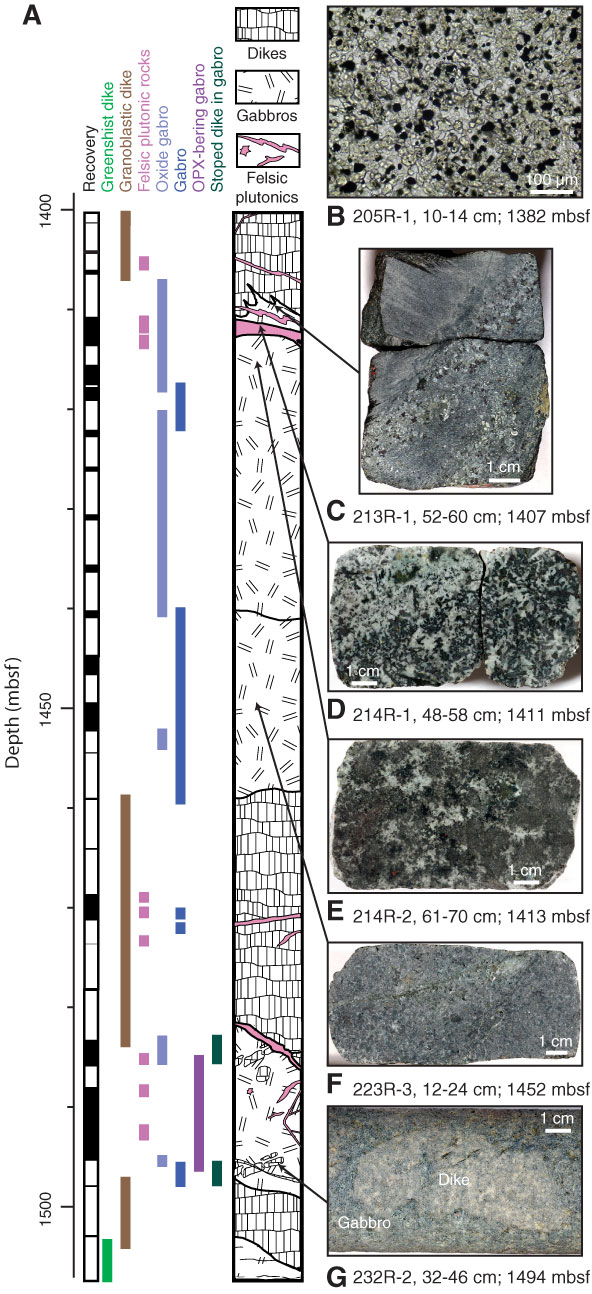
Figure F9. A. Schematic lithostratigraphic section of the plutonic complex from the lower portion of Hole 1256D with representative photographs of key samples. The distribution of rock types is expanded proportionately in zones of incomplete recovery. Felsic plutonic rocks include quartz-rich oxide diorite and trondjhemite. OPX = orthopyroxene. B. Photomicrograph of a dike completely recrystallized to a granoblastic association of equant secondary plagioclase, clinopyroxene, magnetite, and ilmenite. Some granoblastic dikes have minor orthopyroxene. C. The dike/gabbro boundary! Medium-grained oxide gabbro is intruded into granoblastically recrystallized dike along an irregular, moderately dipping contact. The gabbro is strongly hydrothermally altered. D. Quartz-rich oxide diorite strongly altered to actinolitic hornblende, secondary plagioclase, epidote, and chlorite. Epidote occurs in ~5 mm clots in the finer grained leucocratic portions of the rock. E. Disseminated oxide gabbro with patchy texture and centimeter-scale dark ophitically intergrown clinopyroxene and plagioclase patches separated by irregular, more highly altered leucocratic zones. F. Medium-grained strongly hydrothermally altered gabbro. The sample is cut by several chlorite + actinolite veins with light gray halos. Plagioclase is replaced by secondary plagioclase and clinopyroxene by amphibole. G. Clast of partially resorbed dike within gabbro.

Previous | Close | Next | Top of page